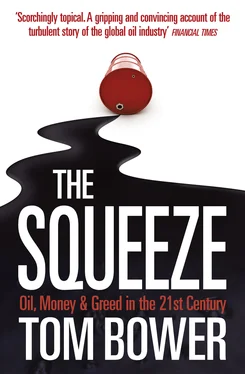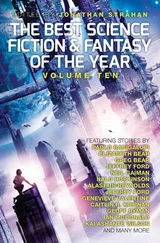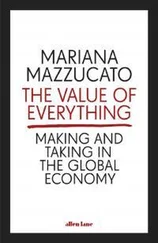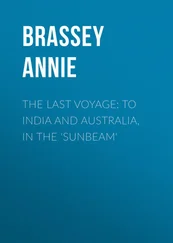BP was founded on disobedience and survived by maverick deeds. The original sinner was William Knox D’Arcy, a wealthy Australian who arrived in Persia in 1901 on a hunch that oil could be discovered there. D’Arcy negotiated a 60-year concession over 480,000 square miles of desert. For seven years his team drilled unsuccessfully across an area twice the size of Texas, until in 1908 he was ordered by Burmah Oil, a Scottish investor, to stop. Having started yet another test bore D’Arcy’s team ignoredthe message and, detecting a strong smell of gas, struck oil. There was no natural reason why that fortuitous discovery should have evolved into the formation of a famous company. Culturally, the directors of the new Anglo-Persian Oil Company based in Glasgow were embarrassingly ignorant about their faraway asset. In contrast to the American oil companies which had spawned an integrated market built on discoveries in Texas and across the prairies, Anglo-Persian, which became BP, was a colonial concession sponsored by the British government. Managed by retired military officers recruited particularly from the Indian army, its staff clung to their suzerainty. Amateurs in marketing and untrained to supervise refineries and chemical industries, they aspired to be gentlemen, and were generally indifferent to indigenous politicians, especially Arabs and Iranians, whom they regarded as inferior. Unlike Shell’s country chairmen, soaked in local cultures and enjoying rapport with host governments, BP’s managers carelessly alienated their hosts, offhandedly oblivious of Iraq’s and Iran’s vast oil wealth.
Little changed before the nationalisation of BP’s oilfields in Iraq in 1951. Sir Eric Drake, the corporation’s conceited chairman, assumed that the confiscation would be compensated by increasing oil prices and the discovery of new reserves in Libya, Nigeria and Abu Dhabi, or by expanding into petrochemicals and shipping. Over the next 20 years, BP balanced the escalating demands of the Shah of Iran, the bellicosity of OPEC and Arab nationalism, especially in Libya, by finding new oil in Alaska in 1968 and the North Sea in 1970. The problem wasthe directors’ lack of commitment to exploration. The discovery of a new field, noted the exploration department in 1971, evoked the reaction, ‘What on earth are we going to do with all this oil?’ Terry Adams, BP’s director in Abu Dhabi, was expected to embody that casual attitude. To finance a pipeline in Alaska, Adams was ordered in early 1973 to sell half of BP’s share in Abu Dhabi’s offshore interests to a Japanese company for $736 million. ‘This is top secret, none of the locals need to know,’ BP’s manager Roger Bexon told him, referring to Sheikh Zaid, the leader of the state. In his anger after the sale was announced, Sheikh Zaid nationalised half of the Anglo-Japanese investment. The Japanese never believed that BP was unaware of the impending confiscation, and the Abu Dhabians griped about BP’s lack of respect. Insouciantly, the British pleaded ignorance, underestimating the profoundly negative consequence of their arrogance.
Arab irritation compounded BP’s problems in the region after the 1973 war. In succession, the company’s oilfields in Kuwait and Libya were nationalised. Overnight, BP’s plight was dire; the company had become entirely dependent on the discovery of oil in Alaska and imminent production in the North Sea, and it had fallen in rank from membership of the Big Three to seventh among the Seven Sisters. Morale was flagging, and there were even fears that BP faced extinction. Unlike the precise management processes at Chevron, Mobil and Exxon, which ran in harmony regardless of the identity of the individual chief executive, BP’s direction depended upon the chairman’s vision. ‘There are no sacred cows,’ declared Peter Walters, appointed chairman in 1981, who advocated retrenchment. BP’s focus was to be entirely oil. Following Exxon and Shell, Walters slowly reversed the diversification into non-oil businesses and ordered a $6 billion sale of all the nutrition manufacturers and mineral interests. He seemed unable to do much more to salvage the company from the morass. Impaired by the British government’s nonchalance, BP was crippled by debts, aggravated by the government’s order to repurchase about 10 per cent of the company’s shares from the Kuwaiti government which had been bought during a disastrous flotation. In an industry dominated by Exxon and Shell, BP had hit the buffers, destabilised by debt. Walters never recovered his self-confidence.
Two BP directors in America regarded Walters’s cuts and style as merely scratching the surface rather than offering a revolution. In 1983, Bob Horton, a brash 46-year-old fellow of the Massachusetts Institute of Technology, and his 35-year-old deputy John Browne had arrived at BP’s American headquarters in Cleveland, Ohio, to supervise BP’s 54 per cent investment in Sohio, the successor to the Standard Oil Company of Ohio, the original John D. Rockefeller corporation. The purchase had given BP an entrée into Alaska, but London had failed to prevent the American directors buying a copper-mining company, wasting $6 billion of Alaskan profits. ‘Sohio’s completely out of control,’ exclaimed Horton. ‘They’re losing $1 billion a year.’ Originally acquired in 1970, Sohio was Horton’s platform to prove his credentials as Walters’s successor. As head of BP chemicals in 1980, he had closed 20 plants and fired two thirds of the workforce. The cure at Sohio in May 1987 was to buy total ownership for $7.9 billion (£2.5 billion) and dismiss swathes of staff. Sohio, Horton and Browne proudly announced, would earn profits of $560 million within two years. Renamed BP America, it represented 53 per cent of BP’s total assets. From Ohio, the warts of BP’s culture in London were glaring. Deprived of courage, hope and energy, BP could only be resuscitated if the employees’ historical aversion to risk was replaced by American entrepreneurship. Their successful remedy in Cleveland, Horton and Browne decided, should be applied to the whole company after they returned to London in 1989.
Like most oil men, Horton and Browne believed in 1989 that ‘demand had peaked’, and oil would remain cheap because high prices stunted demand. Exxon, Mobil, Chevron and other more powerful competitors argued that prices were unpredictable, and survival depended upon cutting costs. Horton encouraged Walters to follow the herd. ‘BP cannot survive with this culture,’ he told Walters after listing eleven layers of management. ‘It’s sclerotic. Get rid of the brigadier belt. Too many have a vested interest to sabotage change.’ Starting from scratch, said Horton, BP needed to be repositioned and to duplicate Shell’s ‘wonderful worldwide brand’. Browne, as the new chief executive of exploration, echoed that criticism. In June 1989 he commissioned a presentation for investors in London and at the Rockefeller Center in New York. ‘This is dreadful,’ he said after previewing the slides. ‘We’re declining.’ BP’s access to 70 billion barrels of reserves had dropped to four billion, and were not being replaced. Production was falling from 1.5 million barrels a day to below one million. While its rival Shell had successfully retained profitable oil and gas fields in Nigeria, Oman, Malaysia, Brunei and Holland, BP would go out of business unless it found new, big prospects. Tom Hamilton, the American chief for international exploration, was told by Browne to present a scenario for a new strategy. ‘I’m going away with my family on holiday,’ explained Hamilton. ‘Take the company plane and come back early,’ ordered Browne. ‘I’ll need 90 days to do it,’ replied Hamilton. ‘You’ve got three days to calculate the best odds to discover more oil,’ replied Browne. In September 1989, Browne commissioned new exploration operations in Yemen, Ethiopia, Vietnam, Angola, Gabon, Congo, South Korea and the Gulf of Mexico.
Читать дальше











![John Bruce - The Lettsomian Lectures on Diseases and Disorders of the Heart and Arteries in Middle and Advanced Life [1900-1901]](/books/749387/john-bruce-the-lettsomian-lectures-on-diseases-and-disorders-of-the-heart-and-arteries-in-middle-and-advanced-life-1900-1901-thumb.webp)
